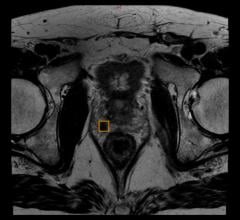
Greg Freiherr has reported on developments in radiology since 1983. He runs the consulting service, The Freiherr Group.
When Seeing Means Business

PET/CT routinely plays an essential role in staging and monitoring a wide range of cancers, including lymphoma and the lung. But it has specific and significant limitations.
In a skeptical world, old maxims fall hard. Photojournalists can attest to that. Seeing today is anything but believing. Not seeing has fallen just as hard. We’d like to know that we can relax when we don’t see signs of cancer’s return. Positron emission tomography/computed tomography (PET/CT) provides that kind of relief in many cases…but not all.
Although it has become the gold standard in oncology diagnosis and monitoring, PET/CT falls short in some cases. And, in those cases, its use can create a false sense of security.
“We sometimes find that PET has been used inappropriately for certain tumor types,” Michael Vannier, M.D., professor of radiology at the University of Chicago, told me. “Renal cell cancer and prostate cancer are notoriously difficult to image with FDG-PET.”
Make no mistake — PET/CT routinely plays an essential role in staging and monitoring patients battling a wide range of cancers, including lymphoma and that of the lung. But it has specific and significant limitations. Prescribing and administering the correct diagnostic tests should restore faith in the maxim, “Seeing is believing.” Knowing which modalities to use under what circumstances constitutes the great contribution that radiology has to make to medical practice now and in the future.
You’d think, therefore, that radiologists would want to enhance their credibility by supplying to referring physicians the images upon which they base their findings. Yet, for the most part, radiology reports are textual…not visual. Perhaps referring docs have grown used to this and, despite the unprecedented ease by which images can be transferred today, they have no interest in getting those images.
What could change this attitude would be a groundswell of interest by the patients themselves. The explosion in smart phones and their applications has put the ability to view medical images at patients’ fingertips. At the same time, an increasing availability of patient portals is laying the foundation for accessing these images. If patients have them — and want to discuss them with their doctors — you can be sure doctors will want them as well.
With that could come a dramatic change in the practice of radiology. The question is whether radiologists will be ready, when seeing means business.
Greg Freiherr has reported on developments in radiology since 1983. He runs the consulting service, The Freiherr Group. Read more of his views on his blog at itnonline.com.


 July 02, 2024
July 02, 2024 








